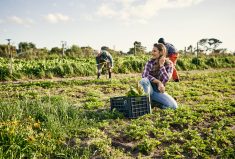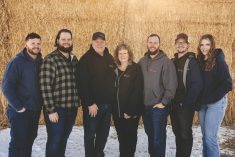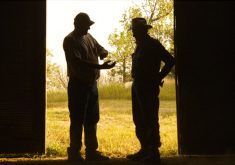Lean in Agriculture: Create More Value with Less Work on the Farm
By Vibeke Fladkjaer Nielsen and Susanne Pejstrup
The Lean Dairy Farm: Eliminate Waste, Save Time, Cut Costs
By Jana Hocken with Mat Hocken
The Lean Farm: How to Minimize Waste, Increase Efficiency, and Maximize Value and Profits with Less Work
By Ben Hartman
On the farm, mid-winter is typically when we recalibrate our harried lives and set intentions and goals for the year ahead. At the top of all our lists is creating a more productive, profitable and sustainable farm business, and these books on how to incorporate the practices of Lean management may help us get there.
Read Also

Ground rules for farm family communications
Establishing meeting ground rules can help your family find ways to communicate that work for your farm. Here are some…
Lean is a holistic approach to business management that gets systematic about identifying and eliminating any waste. As writer Jana Hocken says, its goal is “building continuous improvement into the DNA of the business.”
Around since the 1920s when Henry Ford analyzed workflow and standardized production processes, it was Toyota that really developed the Lean thinking model in the 1940s as Japan struggled financially in the post-Second World War economy. Since then, Lean has been applied to several industries and businesses around the world.
“Lean is about converting business inputs such as people, machines, equipment, and materials through highly efficient and effective processes into the right business outputs… at the lowest cost… and ensuring safe, animal-friendly and environmentally sensitive practices,” writes Hocken.
A foundational component of Lean is identifying problems, or more specifically, the gap between your current situation and your ideal, or target, situation. Problems can increase exponentially over time, so “the quicker we can identify them, the cheaper and more easily we can fix them,” says Hocken. Furthermore, “as farms get bigger, or older, or more competitive, processes get more complex, entangled or forgotten,” so it becomes critically important to create process flow and to map value within systems to quickly target waste and solve the right problem.
All these authors are quick to point out that simply adding new layers of technology is not the solution. You must first identify bad processes and problematic systems and then refine and improve them.
In Japanese, kaizen means continuous improvement in small steps. Success won’t happen overnight and, in fact, the philosophy behind Lean is that it’s a “relentless pursuit of identifying and eliminating waste in order to improve business performance and customer satisfaction” (Hocken). On the farm, we typically focus on improving the tiny, value-added process steps since waste is often hard to see, but you’ll get more bang for your buck and create a bigger impact by first eliminating wasteful tasks and processes.
While all three books cover the guiding principles of Lean and go into quite a bit of detail around the tools and how to use them, the focus of each is slightly different.
Lean in Agriculture offers a number of agriculture-specific examples from all sectors and really helps the reader connect the lingo and the strategies of corporate management with a modern farm business.
The Lean Dairy Farm obviously focuses on dairy and, in addition to numerous dairy-specific examples, it draws on the author’s years of experience at Toyota. It explores how-tos and the tools in detail, and provides team activity suggestions to generate employee buy-in.
The Lean Farm focuses on fruit and vegetable greenhouse production.
These were the only Lean management books I could find related to agriculture, and interestingly, two of the three books were researched and written outside of North America. (Hocken is based in New Zealand and Nielsen/Pejstrup are in the Netherlands.)
I’m not sure what this says about the North American way of farm business management, but I can say there are plenty of lessons and pro tips within the pages of each of these books.
Admittedly, there is a caveat, as Hocken sums up in the last chapter: “The technical stuff is easy… the tools (of Lean management) can be implemented without too much trouble. What’s not easy is sustaining them and getting your people on board.”
Every business is made up of process, people and technology, and it is underpinned by purpose.
“Lean must be applied to each of these components to be effectively integrated into the business,” says Hocken.
Maybe its because the tenets of Lean management appeal to my own Scottish genetic sensibilities, but after having read these three books, I wonder why implementing the practices of Lean on all farms isn’t all the rage. I mean, it’s all in the titles: cut waste, cut costs, save time and maximize profits. Isn’t that the dream? Cheers to achieving your farm dreams in 2021!
















